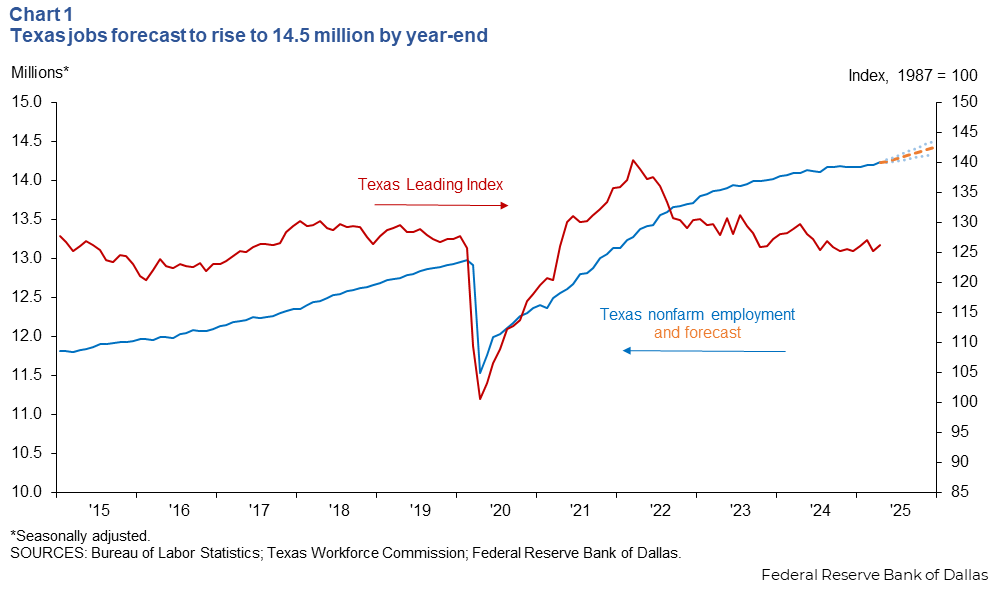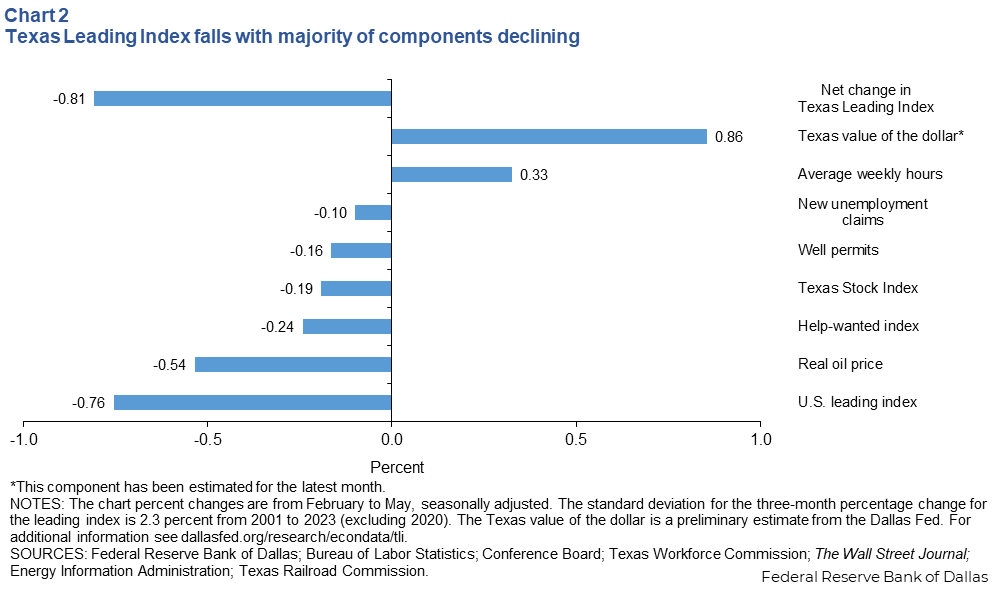Texas Employment Forecast

The Texas Employment Forecast indicates jobs will increase 2.0 percent in 2025, with an 80 percent confidence band of 1.5 to 2.5 percent. The forecast is based on an average of four models that include projected U.S. gross domestic product, oil futures prices and the Texas and U.S. leading indexes. In addition, this forecast utilizes Texas employment data that have been adjusted to include anticipated downward revisions by the Bureau of Labor Statistics. The forecast implies 279,600 jobs will be added in Texas this year, and employment in December 2025 will be 14.5 million (Chart 1).
Texas employment rose an annualized 2.6 percent in May. Meanwhile, April employment growth was revised down to 4.0 percent.
“Solid employment growth continued in May as the state added 31,300 jobs. Texas job growth at 2.5 percent year to date is outpacing its long-term trend of 2.0 percent,” said Luis Torres, Dallas Fed senior business economist. “In May, gains in leisure and hospitality and oil and gas employment led overall job growth, followed by trade and transportation services and construction. The only sectors that lost jobs last month were information services and professional and business services. Employment growth in major Texas metro areas was led by Fort Worth, Austin and San Antonio. Meanwhile, Houston lost jobs last month,” he added.
The Texas Leading Index decreased over the three months through May. (Chart 2). Most of the components declined, led by the decrease in the U.S. leading index and the real oil price. Decreases in the help wanted index, the Texas Stock Index and well permits, and increases in the new unemployment claims, also dragged the index down. An increase in average weekly hours worked and a decrease in the Texas value of the dollar contributed positively to the index.

Next release: July 18, 2025
Methodology
The Dallas Fed’s Texas Employment Forecast projects job growth for the calendar year and is estimated as the 12-month change in payroll employment from December to December.
The forecast is based on the average of four models. Three models are vector autoregressions for which Texas payroll employment is regressed on the lags of West Texas Intermediate (WTI) oil prices, the U.S. leading index and the Texas Leading Index. The fourth model is an autoregressive distributed lag model with regression of payroll employment on lags of payroll employment, current and lagged values of U.S. GDP growth and WTI oil prices, and Texas COVID-19 hospitalizations through March 2023. Forecasts of Texas payroll employment from this model also use forecasts of U.S. GDP growth from Blue Chip Economic Indicators and WTI oil price futures as inputs. All models include four COVID-19 dummy variables (March–June 2020).
For additional details, see dallasfed.org/research/forecast/.
Contact Information
For more information about the Texas Employment Forecast, contact Luis Torres at luis.torres@dal.frb.org.